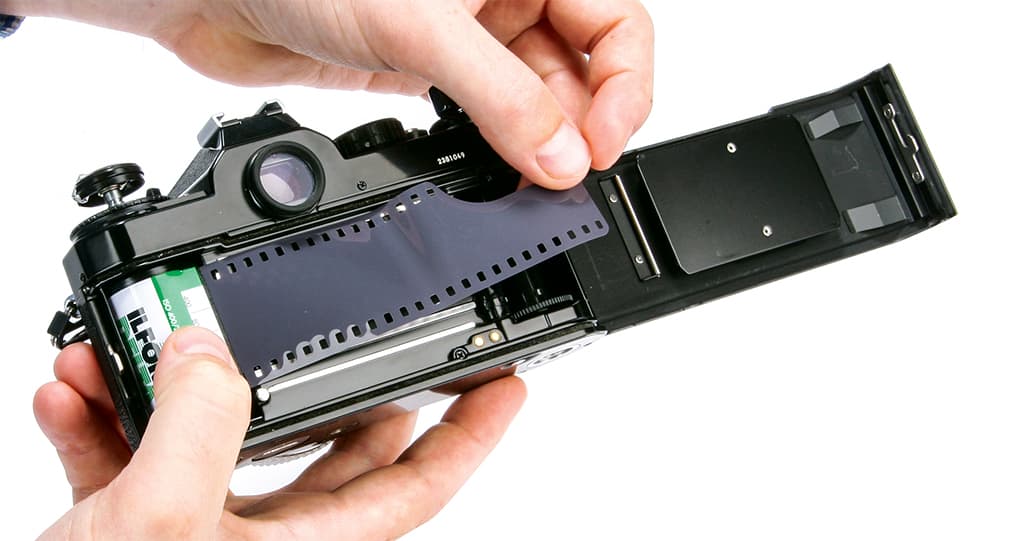
Black & white photography is becoming more and more appreciated. After all, some of the most amazing pictures from the history of photography were taken on film (or glass plates) and there are still thousands of dedicated film users around today. Why is that? Why should you consider using it again? And if you’ve never loaded a roll of film into a camera, why should you start now?
I believe b&w film can be an amazingly creative and rewarding medium. It can be frustrating when things don’t turn out as planned, but this is usually down to poorly thought-out methods. If you can get over the odd disappointment, making mistakes can sharpen your wits and improve your photography very quickly. It doesn’t have to be an expensive exercise either. There are countless second-hand and new film cameras still on the market, and young entrepreneurs are even now setting up businesses based on analogue equipment and methods. There is a wonderful second-hand film camera shop in Leeds, run by two young guys, which is stuffed with beautiful old film cameras (check out www.wycameras.com).
You only have to look at the popularity of the Holga camera, the Lomo and the revival of some of the Polaroid films by The Impossible Project to see that film is still viable, popular and cool. And just consider the sheer number of apps and plug-in filters that mimic film effects. So why not try the real thing if you haven’t before? Some basic film cameras such as Zenit and Praktica are probably cheaper to buy than the software available to fake the results they create!
Film cameras are a joy to hold and to use. They feel properly made – beautiful, well-engineered objects. When you press the shutter, the camera fires immediately without lag or delay. If you are using a fully manual camera that doesn’t rely on any form of battery, you don’t have to carry spare batteries around, or hard drives to back up your pictures. And once your images are processed as negatives, you will have them for life. No crashing, accidental deletion, or software incompatibility issues. The negatives will still be printable for hundreds of years.
Further reading
Essential Guide to Film Processing
Essential Guide to Darkroom Printing
Useful contacts
For more information on available black & white films, take a look at the links below:
Guide to Shooting Film: Choosing Your Film
 Of the conventional films, there are still quite a number on sale, ranging in sensitivity from ISO 25 right up to ISO 3200. Some people love the grain of a fast 35mm film, but others try to use films and developers that keep grain so small it’s almost invisible on a normal-sized print.
Of the conventional films, there are still quite a number on sale, ranging in sensitivity from ISO 25 right up to ISO 3200. Some people love the grain of a fast 35mm film, but others try to use films and developers that keep grain so small it’s almost invisible on a normal-sized print.
There isn’t the space here to cover every single film on the market, so I’ll do a quick summary and give my views on some of the many I have tried, and how I think they perform.
1. Low-sensitivity films
The slowest films currently available are specialist types that need careful processing and are designed to give the greatest detail and the finest grain. There are a number on the market with speeds that range from ISO 3-25 depending on how they are developed: ADOX CMS 20 II, Gigabitfilm, Kodak Technical Pan and Rollei ATP 1.1 Technical Pan.
The next up in the speed ratings are the ISO 50 films, though Ilford PAN F is the only one currently available. To get the best out of them, I would advise processing soon after the film is finished, but you can expect smooth tonality and very fine grain.
2. Fast films

An ISO 400 film, such as Ilford HPS, gives a gritty, punchy look when uprated to ISO 1600 © Andrew Sanderson
ISO 400 films were once considered fast, and a lot of press photography was shot on them. If you are after a slightly grainy look, these will provide it. They are not as grainy as they used to be due to advances in film manufacture, but the grain is still visible. These are good general-purpose films and excellent for street photography. Ilford HP5 Plus, Ilford Delta 400, Kodak Tri-X, Kodak T-Max 400, Fomapan 400, and Kentmere 400 are all worth looking at.
There are a couple of ISO 400-speed films that have a much finer grain structure (strictly speaking, a dye image), but they need to be processed using the same chemicals as colour negative film. This C-41 process is used by all high-street minilabs, making it incredibly easy to get this type of film developed.
The films are known as chromogenic films and there are currently three on the market that I know about: Ilford XP2, Kodak BW400CN (just now discontinued) and Fujifilm Neopan 400 CN. All are rated at ISO 400, but I would suggest you set your meter’s ISO to 320. This will overexpose each frame a tiny bit, but give you much better negatives. Don’t tell the lab you’ve altered the speed; just get them to process it as normal.
Fast films today are between ISO 1600 and 3200. Fujifilm Neopan 1600 has been discontinued, but you may find the odd roll online. Some photographers love it, but I found it a bit too contrasty. Ilford’s Delta 3200 is a good all-rounder: it can be rated at speeds between ISO 800 and 3200, though it’s claimed it can be rated much higher. You are welcome to try this, but don’t expect much printable detail on the negative. My own preference is to rate it at ISO 1600 and process it for the appropriate time, as this gives a good tonality and superb grain. Kodak made one the same speed for a while, but I believe it has been discontinued.
3. Middle-range films

Fine-grained films give a creamy quality to the lighter tones in an image, such as the sky here © Andrew Sanderson
Different photographers have their preferences, but the quality is good with all of these types. Processed in the correct developer, they will still give you fine grain and smooth tonality, but not as fine as the previously mentioned films. Ilford FP4 Plus, Ilford Delta 100, Fomapan 100 Classic, Fujifilm Neopan 100 Acros, Kentmere 100, Kodak T-Max 100 and Rollei Blackbird 100 – I haven’t tried them all, but I know that FP4, Delta 100 and T-Max 100 all produce beautiful negatives.
4. Specialist films
There are a few unusual films that fall outside of the normal range listed so far. There are infrared and pseudo-infrared films such as Ilford SFX, as well as oddities like Ortho film. This will give you different tonality to ordinary (panchromatic) films, since it is mainly blue-sensitive. This means skies are rendered oddly and skin tones come out much darker. It can, however, be loaded and processed under red safelight rather than total darkness.
So that’s my quick rundown on film. Go out and shoot some and enjoy the challenge it provides. Film imposes a discipline that will sharpen your wits.










